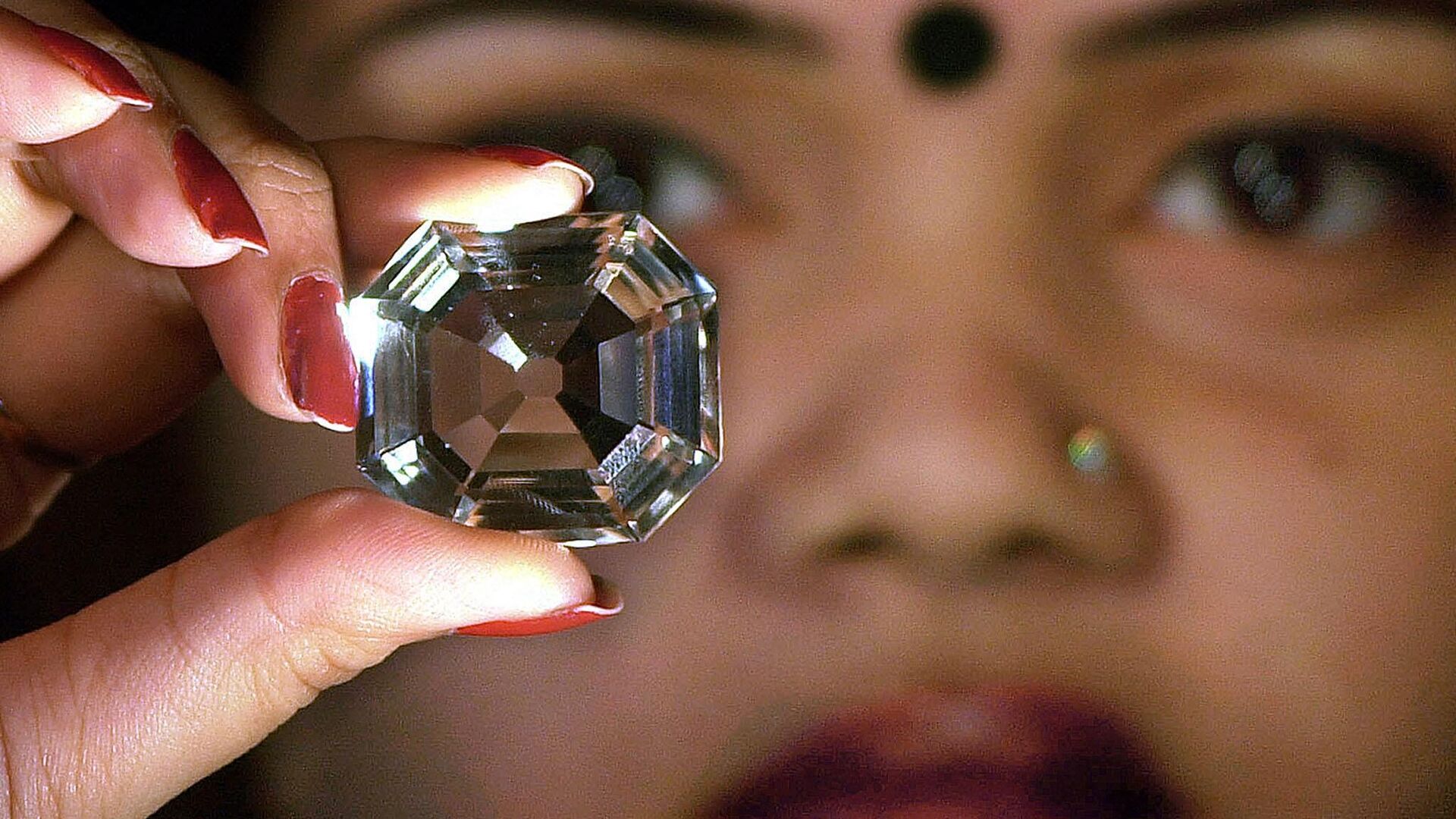https://en.sputniknews.africa/20230515/kohinoor-tacking-origins--historic-journey-of-worlds-most-famous-diamond-1059271473.html
Kohinoor: Tacking Origins & Historic Journey of World's Most Famous Diamond
Kohinoor: Tacking Origins & Historic Journey of World's Most Famous Diamond
Sputnik Africa
Kohinoor, meaning "Mountain of Light," is a precious 105.6-carat diamond which is believed to have been found in a mine near Guntur city of India's Andhra Pradesh in the 13th century.
2023-05-15T14:02+0200
2023-05-15T14:02+0200
2023-08-03T10:48+0200
india
united kingdom (uk)
colonialism
diamonds
international
https://cdn1.img.sputniknews.africa/img/07e7/05/0f/1059267769_0:83:2048:1235_1920x0_80_0_0_5cdd3eb6f813d3b7dae6406169331902.jpg
A recent British media report claimed that the Indian government was planning to launch a major diplomatic campaign to bring back the Kohinoor diamond and other antique artifacts, including centuries-old idols from the United Kingdom.Even after the passing away of Queen Elizabeth II last year, the official spokesperson of India's Foreign Ministry Arindam Bagchi said the Indian government has been raising the issue of the repatriation of the Kohinoor with the British authorities."We have said that we have been raising this matter from time to time with the UK government and we will continue to explore ways and means for obtaining a satisfactory resolution of the matter," Bagchi said at the time.The Kohinoor was back in the limelight at the coronation ceremony of King Charles III earlier this month after Queen Consort Camilla Parker Bowles decided against using the legacy diamond in her crown.Kohinoor's Long & Storied Indian HistoryThe Kohinoor holds special significance in the history of India: the jewel is believed to have first been mined in India's present-day eastern state of Andhra Pradesh.In another version propagated by Babur, the founder of the Mughal Empire in India, Khilji dynast Allauddin acquired the Kohinoor in the 14th century after stealing it from the Indians. The Khilji ruled large parts of the Indian subcontinent, including Delhi from 1296–1316.Subsequently, the precious stone landed in the custody of the Mughals before passing into the hands of Persian invader Nadir Shah, who invaded northern India in the 1730s. Shah eventually defeated the Mughals in the Battle of Karnal and took control of their capital, Delhi, in 1739.Kohinoor then reached different dynasties before falling into the hands of the Sikh Maharaja of Punjab region, Ranjit Singh, in 1809.How Did Kohinoor Fall Into British Hands?However, Singh's successor lost his empire to the British in the second Anglo-Sikh War, before ceding control of the gem to Queen Victoria in 1849.While Kohinoor was initially adorned as a brooch by Queen Victoria, the diamond soon went on to become an integral part of the crown jewels of the British monarch. It first found a place in Queen Alexandra's crown, followed by Queen Mary's.Currently, the jewel is set in the crown of Queen Elizabeth, Britain's longest-serving monarch in history, who passed away in London last year.
https://en.sputniknews.africa/20230514/india-reportedly-aims-to-return-koh-i-noor-diamond--other-colonial-era-artifacts-from-uk-1059247379.html
india
united kingdom (uk)
Sputnik Africa
feedback@sputniknews.com
+74956456601
MIA „Rossiya Segodnya“
2023
Sputnik Africa
feedback@sputniknews.com
+74956456601
MIA „Rossiya Segodnya“
News
en_EN
Sputnik Africa
feedback@sputniknews.com
+74956456601
MIA „Rossiya Segodnya“
Sputnik Africa
feedback@sputniknews.com
+74956456601
MIA „Rossiya Segodnya“
kohinoor diamond, koh-i-noor diamond, india wants diamond back
kohinoor diamond, koh-i-noor diamond, india wants diamond back
Kohinoor: Tacking Origins & Historic Journey of World's Most Famous Diamond
14:02 15.05.2023 (Updated: 10:48 03.08.2023) Kohinoor, meaning "Mountain of Light," is a precious 105.6-carat diamond which is believed to have been found in a mine near Guntur city of India's Andhra Pradesh in the 13th century.
A recent British media report claimed that the Indian government was planning to launch a major diplomatic campaign to bring back the Kohinoor diamond and other antique artifacts, including centuries-old idols from the United Kingdom.
Even after the passing away of Queen Elizabeth II last year, the official spokesperson of India's Foreign Ministry Arindam Bagchi said the Indian government has been raising the issue of the repatriation of the Kohinoor with the British authorities.
"We have said that we have been raising this matter from time to time with the UK government and we will continue to explore ways and means for obtaining a satisfactory resolution of the matter," Bagchi said at the time.
The Kohinoor was back in the limelight at the coronation ceremony of King Charles III earlier this month after Queen Consort Camilla Parker Bowles decided against using the legacy diamond in her crown.
Kohinoor's Long & Storied Indian History
The Kohinoor holds special significance in the history of India: the jewel is believed to have first been mined in India's present-day eastern state of Andhra Pradesh.
In another version propagated by Babur, the founder of the Mughal Empire in India, Khilji dynast Allauddin acquired the Kohinoor in the 14th century after stealing it from the Indians. The Khilji ruled large parts of the Indian subcontinent, including Delhi from 1296–1316.
Subsequently, the precious stone landed in the custody of the Mughals before passing into the hands of Persian invader Nadir Shah, who invaded northern India in the 1730s. Shah eventually defeated the Mughals in the Battle of Karnal and took control of their capital, Delhi, in 1739.
Kohinoor then reached different dynasties before falling into the hands of the Sikh Maharaja of Punjab region, Ranjit Singh, in 1809.
How Did Kohinoor Fall Into British Hands?
However, Singh's successor lost his empire to the British in the second Anglo-Sikh War, before ceding control of the gem to Queen Victoria in 1849.
While Kohinoor was initially adorned as a brooch by Queen Victoria, the diamond soon went on to become an integral part of the crown jewels of the British monarch. It first found a place in Queen Alexandra's crown, followed by Queen Mary's.
Currently, the jewel is set in the crown of Queen Elizabeth, Britain's longest-serving monarch in history, who passed away in London last year.


